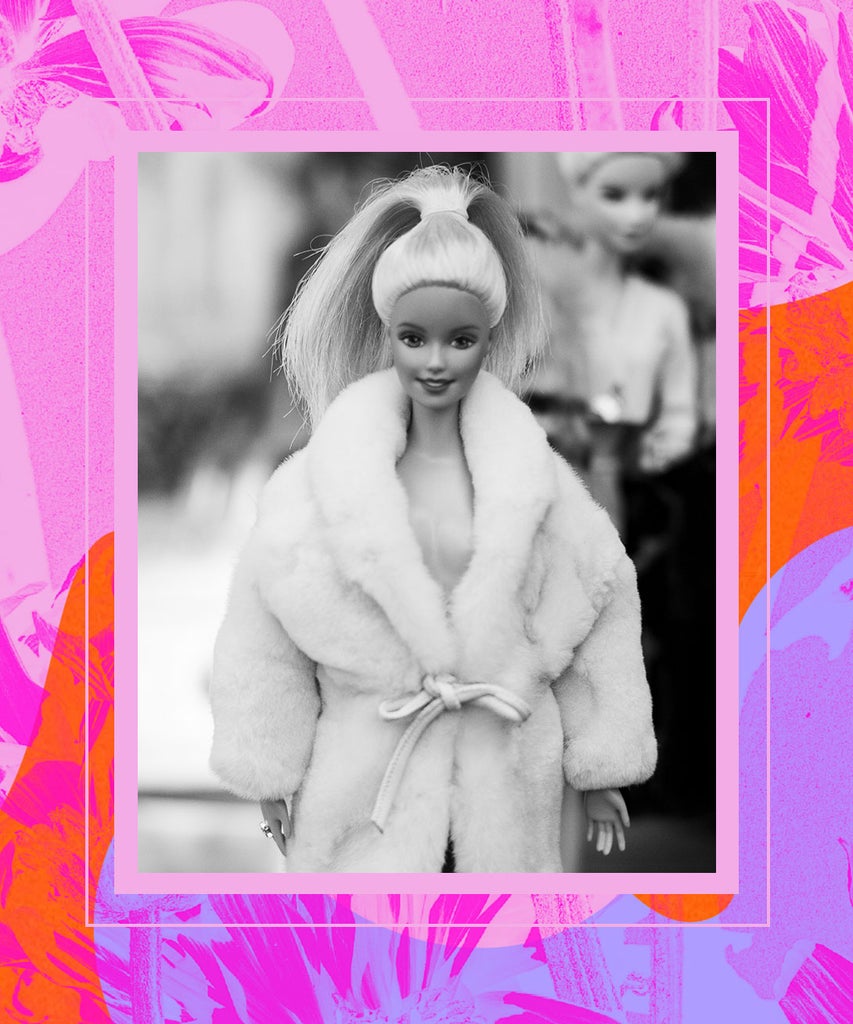
If there’s one thing I love, it’s the hyper-intellectualisation of silly things. I want a video essay on how Love Island operates as a panopticon. I want a TikTok on the Apatow-ification of romcoms. I want a podcast on the critical history of reality TV. So you can imagine my utter delight when I stumbled across Kardashian Kolloquium — a TikTok (and Instagram) account where psychotherapist MJ Corey analyses social media’s “First Family”, the Kardashians. Fucking awesome.
In one particular TikTok, Corey, reading the pop culture encyclopaedia American Icons (written by Dawn Heinecken), uses the section about Barbie to encourage the audience to draw parallels to the discourse around Kim Kardashian. “Barbie’s creator, Ruth Handler, deliberately made Barbie’s face to be as blank and bland as possible,” reads Corey, explaining that this allowed children to “fill in” the blank with their own imagination and attach any identity onto Barbie that they wanted. “Barbie’s numerous careers over the years, ranging from model to astronaut, combine with this openness to make her a sort of ‘everywoman’.”
@kardashian_kolloquium #greenscreen #kimkardashian #kimk #kyliejenner #analysis #booktok #icon #iconic #theory #mediatheory #media #barbie #barbiepink #pink #kardashians ♬ Aesthetic – Gaspar
There are undeniable similarities between Barbie and Kim Kardashian (the dissociative pout, the multi-hyphenate job description, the immaculately curated wardrobe), but here’s my thesis: in Barbie, we see the blueprint for influencer culture more broadly.
With over a decade of watching influencers under our belts, we understand the formula: the glossy lifestyle, the too-handsome boyfriend, the soft glow of the ‘everyday glam’. We are given a front seat to view the building blocks of their seemingly perfect lives without hearing the cicada buzz of their interior monologue. Our parasocial relationships with them fill in the blanks, like playing with virtual dolls.
Handler created Barbie in 1959 after noticing that girls only had baby dolls to play with. Play — which was really a tool to teach work — therefore limited the imaginations of young girls to only see themselves as becoming mothers. By creating an adult woman doll, girls could envision themselves untethered from motherhood, and instead, as individuals.
Not all influencers are moulded in the image of Barbie. Widely, there appear to be two broader categories: those who are adored for their opinions and personal brand and are distinctly themselves, and those who are so palatably malleable that they can be a carrier for anyone else’s brand. The latter is a copy-paste dream — stiff and smiling like Barbie dolls on the production line.
I’m not shitting on these influencers (most of whom are women) — it’s merely an observation. I think it’s smart. They understand capitalism and have figured out how to game the system, where it’s often easier to allow people to imprint their brand onto you than to cultivate a personal one. It is a skill to remove one’s image from oneself. Heinecken sums it up perfectly in American Icons: “For a female figure especially, to be a blank canvas is an ideal precondition to becoming a commodity”. And if you’re a public figure? Your very being can be commodified.
The truth is, never before have we seen women have the ability to acquire such financial capital so easily or dominate such a well-paying industry.
Of course, we must also acknowledge that Barbie legacy isn’t all rainbows and feminist liberation. Heinecken touches on Barbie’s duality, saying that “although Barbie has been criticised by many feminists for representing unrealistic standards of passive femininity, she has simultaneously been seen as promoting a message of empowerment for girls… in the context in which she appeared, Barbie signified freedom”.
Barbie represents the quintessential Western Dream: financial and social independence. Yet she is still the most ‘acceptable’ version of what being successful looks like, as an impossibly thin, able-bodied and conventionally pretty white woman.
But despite Barbie’s flaws, her role has always been to give children an ideal to project possibility onto. To see themselves as an adult with agency. No matter how vapid or capitalism-y or pointless you may think being an influencer is, the truth is, never before have we seen women have the ability to acquire such financial capital so easily or dominate such a well-paying industry. They are playing snakes and ladders with society, and the ladders keep going up and up.
“Barbie the American beauty is also always Barbie the oppressor,” Corey says. “Yet despite our awareness of this, Barbie floats above the fray. She continues to flourish — floating about the globe, spreading the dream of the fabulous Malibu lifestyle where waists are small, breasts are high and everyone’s having a good time.”
Because what are influencers and Barbie selling if not The Dream? The ability to have it all, and look good while doing it? There is a real notion of palatable success for beautiful women. We look at her pretty, deadpan face and think, I could be her. Hey, maybe one day.
Like what you see? How about some more R29 goodness, right here?
Money Diary: An Influencer Manager On 38k